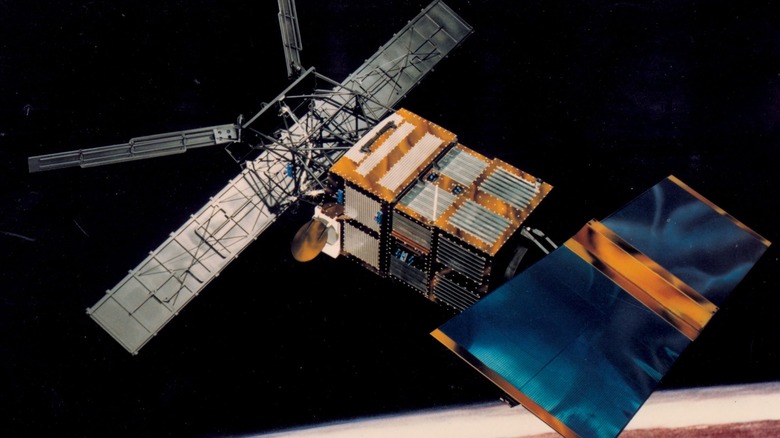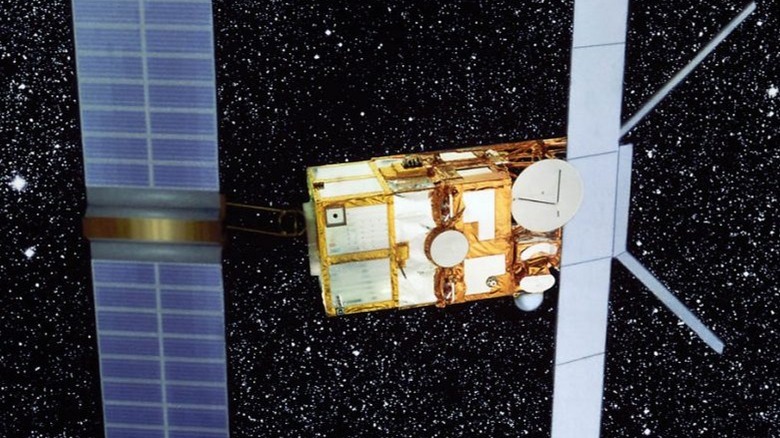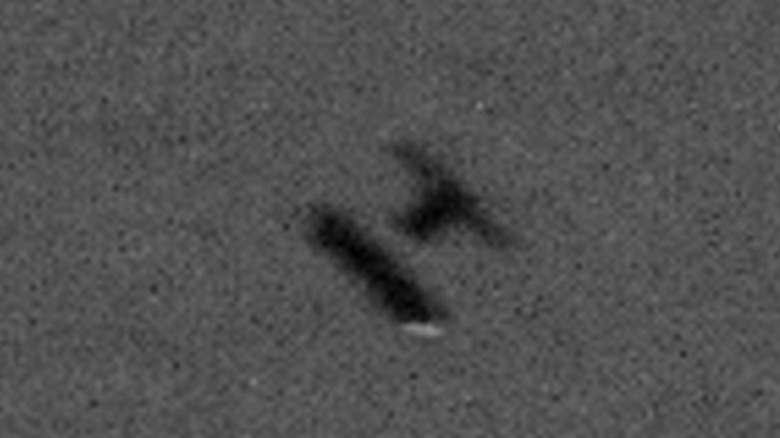Here's What Happens When Old Satellites Crash Through Earth's Atmosphere
There are a lot of different satellites orbiting the Earth. This shouldn't come as a surprise since humanity has been putting them up there ever since Sputnik launched in 1957. The United Nations Office for Outer Space Affairs (UNOOSA) maintains an index that states that there are currently 12,712 objects in orbit around the planet. That's a lot of metal drifting up above the atmosphere.
There is a good amount of space in Earth's orbit, but satellites move around, and too much debris makes it harder to put new satellites in orbit as it increases the chances of them colliding. Older or poorly launched satellites sometimes have to be brought back down through the Earth's atmosphere, where they come crashing down to the surface. You might be wondering what happens when one of these crashes occurs. Well, one of them has just taken place.
The ERS-2, or European Remote Sensing 2, is a 5,000-pound satellite that was launched by the European Space Agency back in 1995. According to the ESA website, "At the time, it was the most sophisticated Earth observation spacecraft ever developed and launched by Europe." This observational satellite was designed to work in conjunction with the ERS-1 to provide data on Earth's land surfaces, oceans, and polar caps, as well as help monitor natural disasters. This satellite was decommissioned in 2011, and the ESA began a series of 66 deorbiting maneuvers in order to bring the craft down where it would slowly begin its descent. 13 years later, it finally broke orbit and re-entered the Earth's atmosphere on February 21, 2024.
The ERS-2 took a long time to come down
The deorbiting maneuvers performed by the ESA back in 2011 used up all of the craft's remaining fuel. It was then left on a trajectory that would allow it to naturally fall to the Earth's surface. It was difficult for the ESA to predict exactly how long this process would take, but it originally predicted that the craft would descend sometime in the following 15 years. This also meant that while the ESA could monitor the satellite, the organization could not perform any further maneuvers to control where it would eventually crash. Its scientists simply had to watch the satellite fall and closely monitor it to ensure the resulting debris wouldn't cause any harm.
It was first noted that the ERS-2 was beginning its descent on February 2, and the ESA shared live updates on its website as it monitored the planned crash. These updates primarily reported the shrinking window during which the craft would break the atmosphere. Its scientists attempted to predict air density, weather patterns, and numerous other variables that could affect when and where the craft would land. These predictions grew more and more accurate as the satellite descended.
The ERS-2 has already fallen to Earth
The ESA posted an update at 18:35 CET that stated that the ESA had lost sight of the ERS-2 and that there were no new observations of the craft but that the reentry window had closed, which likely meant that the satellite had already reentered the Earth's atmosphere. The final update came two hours later at 20:30, stating that the ESA confirmed that atmospheric reentry occurred at exactly 18:17 CET. So what happened to it?
Well, according to the ESA's earlier description of the ERS-2's reentry, "The vast majority of the satellite will burn up, and any pieces that survive will be spread out somewhat randomly over a ground track on average hundreds of kilometres long and a few tens of kilometres wide." That might have been problematic in an urban area, but fortunately, the ESA has stated that the craft's remains landed somewhere in the northern Pacific between Alaska and Hawaii. This means that the bulk of the satellite was destroyed as it came in contact with the atmosphere, and the scattered remains of the craft are most likely already sitting at the bottom of the ocean.


